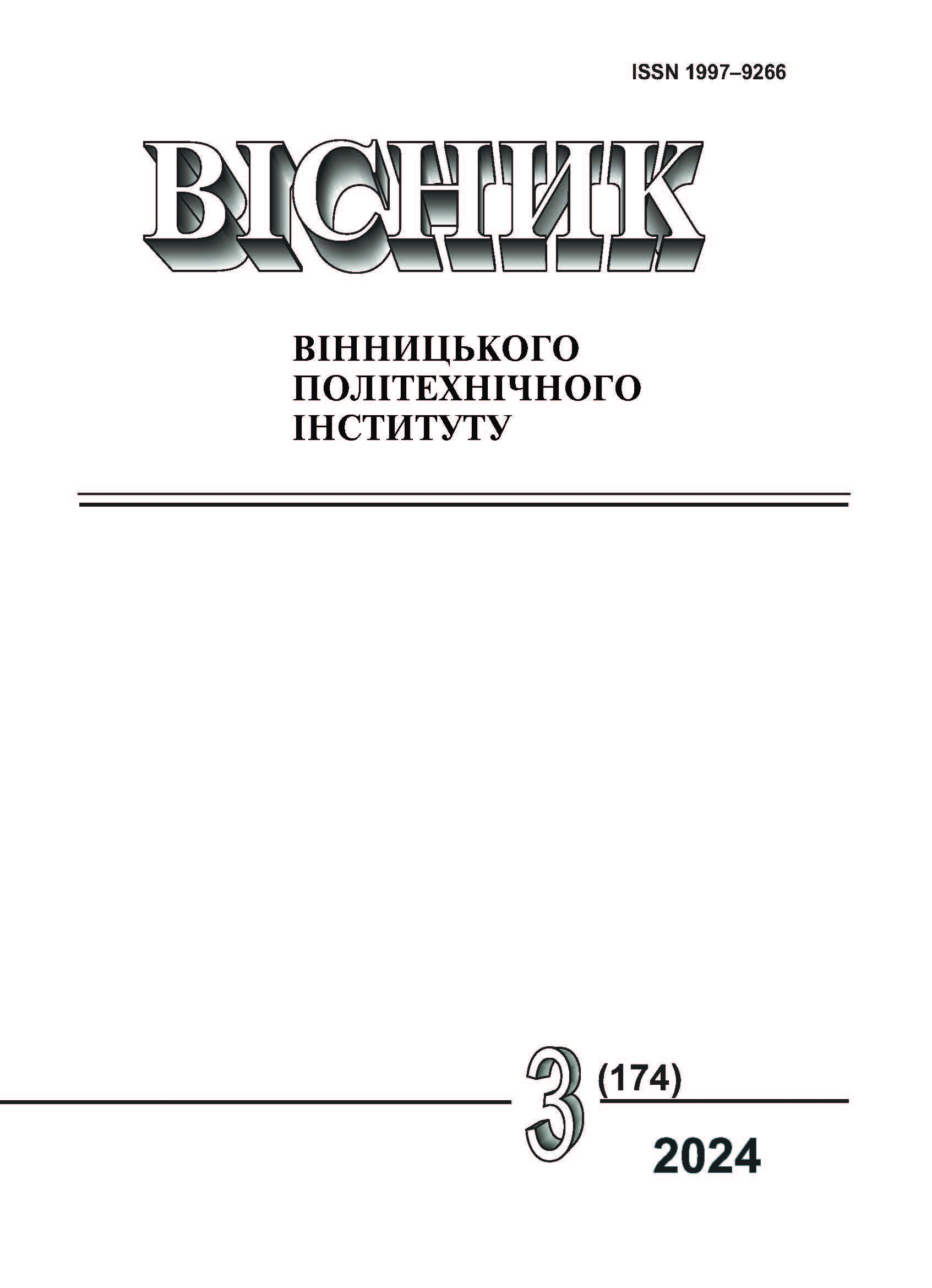Model of Operation of the Distribution Power Grid in Isolated Mode
DOI:
https://doi.org/10.31649/1997-9266-2024-174-3-40-49Keywords:
microgrid, renewable energy sources, hybrid systems, energy storage systems, distributed energy resource management system, isolated modeAbstract
The vulnerability of powerful power generation facilities and the transmission system to military, man-made, and natural impacts, and the extreme complexity of protecting these facilities from the mentioned impacts necessitate the search for new solutions to provide reliable power supply to consumers. Obvious direction in this aspect is the practical implementation of elements of a decentralized approach to ensuring the functioning of the Interconnected Power System (IPS) of Ukraine. The intensive development of renewable energy in Ukraine in recent years has been driven, among other things, by the sources of relatively low power (in particular, solar power plants (SPP) with an installed capacity of up to 100 kW), which created the preconditions for the practical implementation of the microgrid concept, which enables to provide long-term power supply of local consumers even in the event of disconnection of power grid from the ІPS, which supplies power to microgrid consumers under normal operating conditions.
This article presents the results of modeling the functioning of a microgrid created on the base of a real electric grid of a settlement with the corresponding daily profiles of power consumption and generation by local sources. The modeling was carried out in the MATLAB software environment. Two model configurations were considered in the study: a hybrid microgrid with a SPP and a diesel generators and a hybrid microgrid with a SPP and energy storage unit.
The objective of the study to achieve stable operation of the power grid in the conditions of loss of electrical connection with the external power system, providing priority power supply to critical infrastructure facilities and consumers of the 1-st category in terms of reliability is ensured. Two main scenarios of isolated microgrid operation were modeled: winter (including cloudy and sunny days) and summer periods of maximum consumption.
The results of the study show the possibility of practical organization of microgrids based on existing distribution power grids with local energy sources using Distributed Energy Resource Management Systems (DERMS), which ensure high efficiency of the local energy infrastructure and sustainability of the created microgrid.
References
J. Wang et al., “Optimal renewable resource allocation and load scheduling of resilient communities,” Energies, vol. 13, no. 21, 5683 p., Oct. 2020. [Electronic resource]. Available: https://doi.org/10.3390/en13215683 . Accessed: Feb. 15, 2024.
C. Marnay, G. Venkataramanan, M. Stadler, A. S. Siddiqui, R. Firestone, and B. Chandran, “Optimal technology selection and operation of commercial-building microgrids,” IEEE Trans. Power Syst., vol. 23, no. 3, pp. 975-982, Aug. 2008. [Electronic resource]. Available: https://doi.org/10.1109/tpwrs.2008.922654 . Accessed: Mar. 4, 2024.
M. C. Bozchalui, and R. Sharma, “Optimal operation of commercial building microgrids using multi-objective optimization to achieve emissions and efficiency targets,” 2012 IEEE Power and Energy Society General Meeting, San Diego, CA, USA, 2012, pp. 1-8. [Electronic resource]. Available: https://doi.org/10.1109/PESGM.2012.6345600 . Accessed: Mar. 4, 2024.
A. Arif, Z. Wang, J. Wang, and C. Chen, “Power Distribution System Outage Management With Co-Optimization of Repairs, Reconfiguration, and DG Dispatch,” IEEE Trans. Smart Grid, vol. 9, no. 5, pp. 4109–4118, Sep. 2018. [Electronic resource]. Available: https://doi.org/10.1109/tsg.2017.2650917 . Accessed: Mar. 12, 2024.
C. Chen, J. Wang, F. Qiu, and D. Zhao, “Resilient Distribution System by Microgrids Formation After Natural Disasters,” IEEE Trans. Smart Grid, vol. 7, no. 2, pp. 958-966, Mar. 2016. [Electronic resource]. Available: https://doi.org/10.1109/tsg.2015.2429653 . Accessed: Mar. 4, 2024.
T. Ding, Y. Lin, G. Li, and Z. Bie, “A New Model for Resilient Distribution Systems by Microgrids Formation,” IEEE Trans. Power Syst., vol. 32, no. 5, pp. 4145-4147, 2017. [Electronic resource]. Available: https://doi.org/10.1109/tpwrs.2017.2650779 . Accessed: Mar. 4, 2024.
A. Hussain, V.-H. Bui, and H.-M. Kim, “Microgrids as a resilience resource and strategies used by microgrids for enhancing resilience,” Applied Energy, vol. 240, pp. 56-72, 2019. [Electronic resource]. Available: https://doi.org/10.1016/j.apenergy.2019.02.055 . Accessed: Mar. 12, 2024.
R. Kallel, G. Boukettaya, and L. Krichen, “Demand side management of household appliances in stand-alone hybrid photovoltaic system,” Renew. Energy, vol. 81, pp. 123-135, Sep. 2015. [Electronic resource]. Available: https://doi.org/10.1016/j.renene.2015.03.024 . Accessed: Mar. 15, 2024.
“How HOMER Calculates the PV Array Power Output,” HOMER - Hybrid Renewable and Distributed Generation System Design Software. [Electronic resource]. Available: https://homerenergy.com/products/pro/docs/3.15/how_homer_calculates_the_pv_array _power_output.html . Accessed: Feb. 15, 2024.
F. A. Farret, and M. G. Simões, Eds., Integration of Alternative Sources of Energy. Hoboken, NJ, USA: Wiley, 2005. [Electronic resource]. Available: https://doi.org/10.1002/0471755621 . Accessed: Feb. 15, 2024.
M. A. Mohamed, A. M. Eltamaly, A. I. Alolah, and A. Y. Hatata, “A novel framework-based cuckoo search algorithm for sizing and optimization of grid-independent hybrid renewable energy systems,” Int. J. Green Energy, vol. 16, no. 1, pp. 86-100, Oct. 2018. [Electronic resource]. Available: https://doi.org/10.1080/15435075.2018.1533837 . Accessed: Feb. 15, 2024.
Downloads
-
PDF (Українська)
Downloads: 107
Published
How to Cite
Issue
Section
License

This work is licensed under a Creative Commons Attribution 4.0 International License.
Authors who publish with this journal agree to the following terms:
- Authors retain copyright and grant the journal right of first publication.
- Authors are able to enter into separate, additional contractual arrangements for the non-exclusive distribution of the journal's published version of the work (e.g., post it to an institutional repository or publish it in a book), with an acknowledgment of its initial publication in this journal.
- Authors are permitted and encouraged to post their work online (e.g., in institutional repositories or on their website) prior to and during the submission process, as it can lead to productive exchanges, as well as earlier and greater citation of published work (See The Effect of Open Access).





